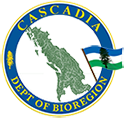The Tlingit language is spoken by the Tlingit people in Southeast Alaska from Yakutat (Yaakwdáat, Yàkwdât) south to Portland Canal, and from British Columbia into south-central Yukon Territory between Tagish and Kaska northward. The Tlingit language is distantly related to Eyak and the Athabaskan languages as a branch of the Na-Dene language family, and is part of the larger Dené–Yeniseian language family. Although the name is spelled “Tlingit” in English it is actually pronounced closer to “Klinkit”. This is due to the spelling and the pronunciation in English having two different approximations of the voiceless lateral fricative [ɬ] spelled as either ł or l in Tlingit.
The history of Tlingit is poorly known, mostly because there is no written record until the first contact with Europeans around the 1790s. Documentation was sparse and irregular until the early 20th century. The language appears to have spread northward from the Ketchikan–Saxman area towards the Chilkat region since certain conservative features are reduced gradually from south to north. The shared features between the Eyak language, found around the Copper River delta, and Tongass Tlingit, near the Portland Canal, are all the more striking for the distances that separate them, both geographic and linguistic.
Tlingit word order is SOV when non-pronominal agent and object phrases both exist in the sentence. However, there is a strong urge to restrict the argument of the verb phrase to a single non-pronominal noun phrase, with any other phrases being extraposed from the verb phrase. If a noun phrase occurs outside of the verb phrase then it is typically represented in the verb phrase by an appropriate pronoun.
Despite not being a fusional language, Tlingit is still highly synthetic as an agglutinating language, and is even polysynthetic to some extent. The verb, as with all the Na-Dené languages, is characteristically incorporating. Nouns are in comparison relatively simple, with many being derived from verbs.
Extensive effort is being put into revitalization programs in Southeast Alaska to revive and preserve the Tlingit language and culture.


Post a comment